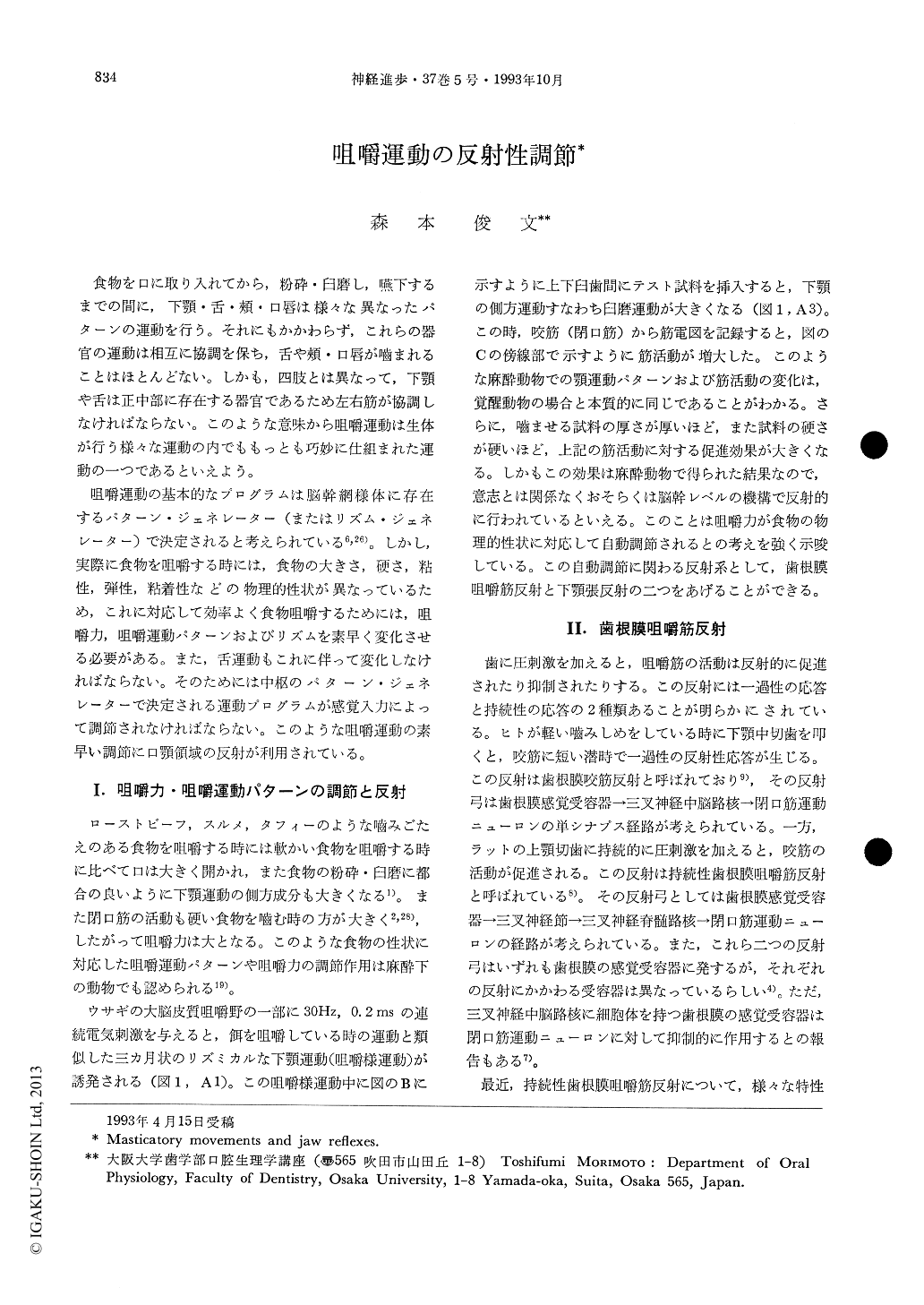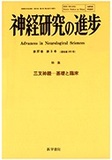Japanese
English
- 有料閲覧
- Abstract 文献概要
- 1ページ目 Look Inside
食物を口に取り入れてから,粉砕・臼磨し,嚥下するまでの間に,下顎・舌・頬・口唇は様々な異なったパターンの運動を行う。それにもかかわらず,これらの器官の運動は相互に協調を保ち,舌や頬・口唇が噛まれることはほとんどない。しかも,四肢とは異なって,下顎や舌は正中部に存在する器官であるため左右筋が協調しなければならない。このような意味から咀嚼運動は生体が行う様々な運動の内でももっとも巧妙に仕組まれた運動の一つであるといえよう。
咀嚼運動の基本的なプログラムは脳幹網様体に存在するパターン・ジェネレーター(またはリズム・ジェネレーター)で決定されると考えられている6,26)。しかし,実際に食物を咀嚼する時には,食物の大きさ,硬さ,粘性,弾性,粘着性などの物理的性状が異なっているため,これに対応して効率よく食物咀嚼するためには,咀嚼力,咀嚼運動パターンおよびリズムを素早く変化させる必要がある。また,舌運動もこれに伴って変化しなければならない。そのためには中枢のパターン・ジェネレーターで決定される運動プログラムが感覚入力によって調節されなければならない。このような咀嚼運動の素早い調節に口顎領域の反射が利用されている。
While food is chewed in the mouth, the pattern of rhythmic jaw movements varies with the pro-cess of mastication. Rhythmic movements of the jaw are fundamentally programmed in the central nervous system, i.e., the central pattern (or rhythm) generator. During chewing food, however, these movements must be controlled according to physical properties of food such as size, hardness, elasticity, viscosity, and so on. Furthermore, the movement of the tongue also must change in accordance with the change in the jaw movements. Reflexes in the oral-facial region are utilized for the control and integration of the masticatory jaw and tongue movements.
1. Jaw reflexes
Jaw reflexes are classified into two groups according to the direction of the jaw movement: jaw closing reflex and jaw opening reflex. The former is further divided into two types. One is the periodontal-masticatory muscle reflex and the other is the jaw-jerk reflex. Both reflexes contribute to the control of the biting and chewing forces.

Copyright © 1993, Igaku-Shoin Ltd. All rights reserved.


